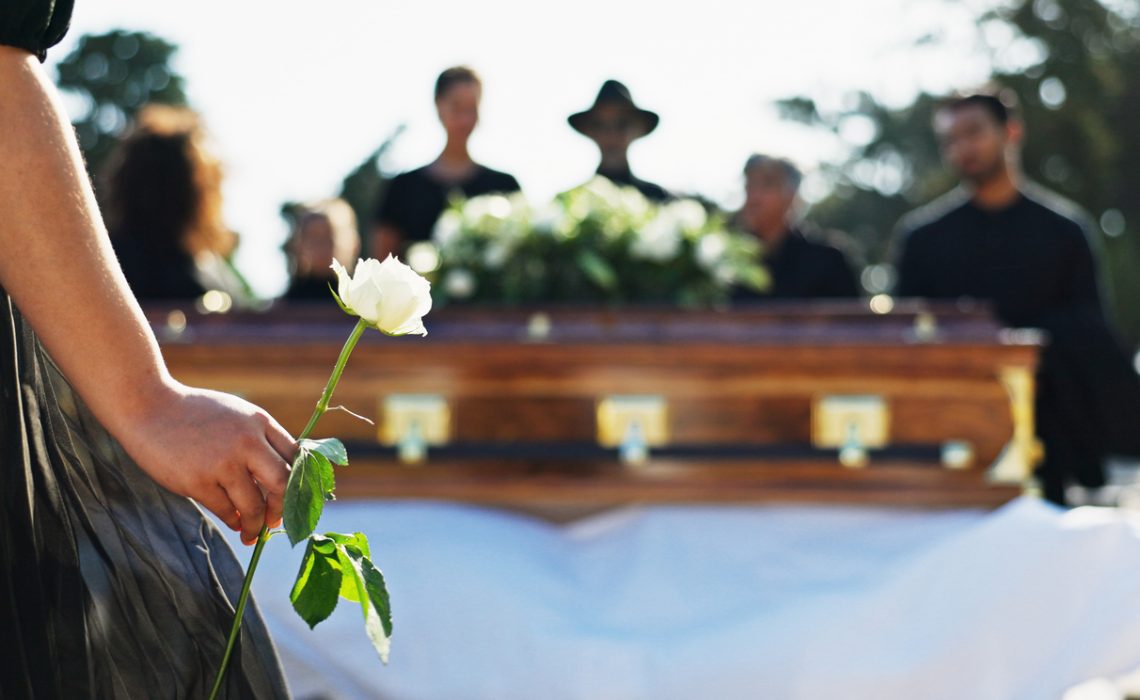
Saying goodbye to a loved one is hard enough. Worrying about money on top of grief makes it even heavier.
According to Bankrate, the average funeral in the United States can range between $6,280 and $8,300, depending on burial or cremation options and location.
That’s just the basics. Once you factor in transportation, paperwork, and cemetery charges, the bill can climb even higher.
Think about it this way: most families don’t even have $1,000 tucked away for emergencies. According to a Bankrate survey, only 41% of people say they would use savings to cover an unexpected $1,000 emergency expense. When you put that against the typical price of a funeral, it is easy to see why so many families look for outside help.
Expenses can vary depending on where you live. World Population Review says that in some states, average funeral costs hover near $7,000 to $9,000. Where you live also plays a role. A funeral in New York City will likely cost more than one in rural Iowa. On the flip side, small-town services may mean extra travel costs that cancel out the savings.
Many families are not prepared for these costs. However, there is hope.
What matters most is knowing that, no matter where you live, you don’t have to take on this burden by yourself. There are many organizations that help with funeral expenses, and you can access them for financial support during this difficult time. Memorial fundraising is also an option.
We’re about to break down some of the most helpful ways to get support with funeral expenses. Keep reading to discover which route is best for you.
Federal Government Assistance Programs that Help With Funeral Costs
Before you turn to charities or community fundraising, it helps to check what assistance the federal government can offer. The government has programs that give families a small cushion at one of life’s hardest moments.
Social Security Death Benefits
If your spouse or parent paid into Social Security, you may qualify for a one-time payment of $255. Small, yes, but it can cover paperwork or immediate fees that catch you off guard. To claim it, you’ll need documents like the death certificate and proof of relationship.
Processing can take several weeks, but it’s worth claiming if you’re eligible.
Veterans Affairs Burial Benefits
Military service brings with it a promise of care, even after death. If your loved one served, the Department of Veterans Affairs may provide burial in a national cemetery, a government-issued grave marker, and in some cases a burial allowance.
Contact your local VA office to learn what you qualify for. You’ve earned it through their service.
FEMA Disaster Relief Assistance
If your loss was caused by a federally declared disaster, you may qualify for assistance through the Federal Emergency Management Agency (FEMA).
That might include transportation, burial or cremation, and the service itself. You’ll need to prove the death was disaster-related and show receipts for what you’ve already paid. The amount varies with each event, but for families in crisis it can feel like a lifeline.
State and Local Government Aid Programs
Support does not stop at the federal level. Many states, counties, and even townships have funds to help residents with funeral expenses, especially for families already receiving public assistance.
Medicaid and Public Assistance Recipients
For families already receiving Medicaid, state governments have programs that help with funeral and burial costs.
It’s not a uniform system, which means a quick call to your local Department of Human Resources is the only way to know what’s available to you. Even a modest contribution can help when every bill feels overwhelming.
County and Municipal Programs
Your county or city may also offer support for low-income families. These programs aren’t always well-advertised, so reach out directly to local offices, coroner’s offices, or township trustees. Even modest contributions can make a difference.
Charitable Organizations and Non-Profits
Government aid is important, but it doesn’t always stretch far enough. That’s when charities and nonprofits step in. Some are faith-based, others are community-focused, but they are committed to supporting families during loss.
Religious Organizations
Many local religious communities are prepared to help. Churches, mosques, and synagogues often have benevolence funds to help members in times of need. National organizations like Catholic Charities USA may also provide support. If you’re unsure, simply ask.
Specialized Charity Organizations
If you’ve lost a child, organizations like the Final Farewell Organization or the TEARS Foundation may be able to help.
The Hebrew Free Burial Association provides free funerals within the Jewish community. Programs like Children’s Burial Assistance operate nationwide. These specialized organizations offer support to their communities.
Local charitable trusts or foundations may also step in, so be sure to research what’s available in your area.
Professional and Union Organizations
If your loved one was part of a union, professional association, or fraternal lodge, you may be entitled to survivor or funeral benefits. Additionally, some employers provide similar programs. It never hurts to ask.
Modern Fundraising Solutions: Crowdfunding Platforms
Even with government programs and charities, you might find that there is still a gap. That is where online fundraising can make a real difference.
By creating a fundraiser, you can share your loved one’s story and allow friends, family, and even compassionate strangers to contribute. You can come up with a meaningful funeral or memorial fundraiser idea to honor your loved one’s life in a personal way.
You might be wondering which crowdfunding platform is best. Here’s a breakdown:
GoFundMe is a familiar name in crowdfunding, which makes it easy to trust, though that visibility comes with trade-offs. While GoFundMe claims to take swift action on reported fraud, it does not manually review every fundraiser before launch, relying instead on community flagging and post-launch investigations.
Fundly positions itself as a cost-friendly choice: there’s no platform fee for organizers, and it relies on Stripe processing charges (about 2.9% + $0.30). However, for certain campaigns or levels, Fundly may apply additional fees or discounts based on performance tiers.
If you choose a reputable funeral fundraising site like AngeLink, you gain access to tools that make the process easier and more effective. You can print a flyer with a unique QR code so donations are quick and simple at in-person gatherings.
The AngeLink team reviews every fundraiser before it goes live, giving you and your supporters peace of mind.
Writing a heartfelt description and sharing it across social media often makes the biggest difference in how much support you receive. Use appropriate and compelling funeral fundraiser wording to encourage people to contribute. Storytelling is key.
Losing someone you love is heartbreaking. The financial stress can feel overwhelming.
But you don’t have to go through this alone. There are many organizations that help with funeral expenses. You can also use a platform like AngeLink to raise money for a funeral. That way, you can honor your loved one’s memory with dignity while receiving the help you need.
